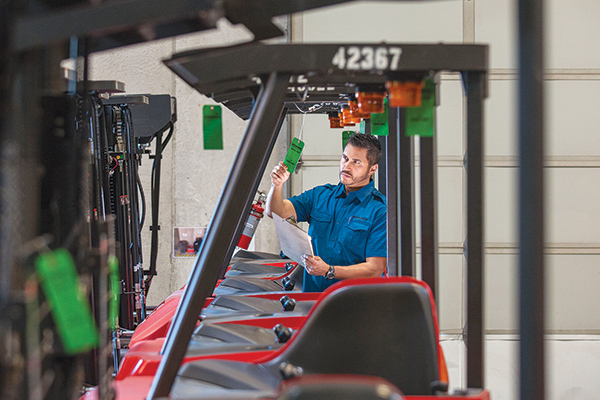Lift Truck Tips: New accounting rules to impact operations
Starting January 1, organizations whose finance and operations personnel are on the same page will benefit the most.
Fleets of all sizes are under more scrutiny than ever, and operations and finance stakeholders have had to partner closely to ensure a holistic view of requirements and costs. In a few months, however, the rubric will change and compel an even greater collaboration between those who sign on the dotted line and those who rely on forklifts every day.
On Jan. 1, 2019, the Finance Accounting Standards Board’s FASB13 will take effect. Here’s a very brief summary of its more than 100 pages of accounting verbiage: Under current accounting standards, capital leases are reported on the balance sheet as an asset and liability.
Operating leases, however, are supposed to be footnoted on the balance sheet but are expensed on the income statement. Under the new generally accepted accounting principles (GAAP), all leases (capital and operating) will be accounted for on the balance sheet as Right of Use (ROU) assets.
Sue Rice, marketing manager for Raymond Leasing, The Raymond Corp.’s captive leasing company, explains.
“This will have a couple of significant impacts to companies. First, having all leases on the balance sheet will give creditors greater visibility to total liabilities. Secondly, many companies did not require capital approval of off-balance-sheet acquisitions such as rentals and operating leases, which made it quicker and easier to obtain equipment,” Rice says.
“The increased scrutiny associated with on-balance-sheet capital approvals may slow or restrict some companies’ equipment acquisition process, which makes it more important than ever for finance and operations to partner up.”
The best way to keep these two parts of the business aligned, she adds, is to use data to make the best decisions. Data will help confirm when to replace equipment, how many units are needed, and the best equipment and finance option to meet the demands.
Leasing is an increasingly popular means of controlling forklift expenses and replacement cycles, and enables access to the latest technology. Fleet management and telematics solutions are also used to harvest detailed utilization data to inform lease terms and total cost of ownership. This avoids the broad averages and predictions that rarely lead to the best lease agreements.
“Telematics are a great tool for better business decisions. You can look at the history, see usage rates, determine if you need more units, if you’re using the right unit, or if you need more training. Take a step back and think about how customers expect to use equipment.
Do they want to own or periodically replace to keep equipment updated and maintenance costs down? Those plans and schedules benefit from an operating lease, which offers the greatest flexibility,” Rice says. “They can return, re-lease, extend month-to-month or purchase outright.”
It’s important to stay on top of it, Rice says, because operating leases are still an important part of the strategy for equipment update. Five to seven years, as a rule of thumb, is an ideal time to update before a forklift’s maintenance costs rise.
The combination of flexible leasing strategies and detailed data collection is a boon to leasing companies, which can then shape optimal terms for all parties.
“Over the last 18 months we’ve seen an explosion of interest in data and fleet management solutions,” Rice adds. “If we can do a better job of managing risk assessments for trucks, we can be more aggressive with residuals and more accurately predict future fair market value.”













